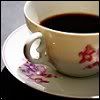Post by braided-rug on Apr 8, 2007 14:23:06 GMT 10
"Biennial. Traditional cottage garden plant, originally hailing from China. Closely related to the Marshmallow. Indeed, the Anglo-Saxon word for Mallow was "hoc". Tall, stately spikes of densely-petalled, single flowers. Grows 5 - 9 ft (1.5 - 2.7 m) high. Flowers May to October. Its name comes from the Greek "alkaia", meaning Mallow. It is possible its name is also a corruption of "holy" - the plant was alleged to have been brought back here with the Crusades. It may also have been called Hock Leaf because it was used to reduce the swelling in horses' hocks.
The Hollyhock is a very old plant. The grave of a 50,000 year old Neanderthal man was found to contain the remains of Hollyhocks. Hollyhock buds were used in a recipe of 1660, with Marigolds, Wild Thyme and young Hazel buds to enable one to see fairies. Children used to make Hollyhock dolls from the flowers. The seeds have been called "cheeses" because the pod is shaped like a wheel of cheese.
Butterfly plant and also a good bee plant. Food plant of caterpillars of the Mallow moth. Hollyhock flowers are often used in Chinese recipes. In Tudor times, dried Hollyhock roots were added to wine in the belief that drinking it would help prevent miscarriages and blood clots. Leaves were cooked and eaten as greens.
Hundreds of years ago, hollyhock flowers were used in infusions for diseases of the lungs and bladder. Leaves and flowers can be used to prepare a lotion for dry, itchy skin and sunburn. Can also be used to aid digestion. Plant is useful in treating chest ailments. The root contains vitamin A, calcium, zinc, iron, sodium, iodine and B-complex vitamins. Hollyhock can soothe inflammation and relieve dryness and irritation in the chest.
Hollyhock buds were used in a recipe of 1660 with Marigolds, Wild Thyme and young Hazel buds - this concoction enabled you to be able to see fairies. Children used to make Hollyhock dolls from the flowers.
Cut off dead flower spikes. Cut right down after flowering. Thrives best in full sun. May need staking so best to grow against a wall.
*This sheet is provided for information only and is in no way a prescription for use. Please seek the advice of a qualified herbalist before using*"
From: www.englishplants.co.uk/hock.html
The Hollyhock is a very old plant. The grave of a 50,000 year old Neanderthal man was found to contain the remains of Hollyhocks. Hollyhock buds were used in a recipe of 1660, with Marigolds, Wild Thyme and young Hazel buds to enable one to see fairies. Children used to make Hollyhock dolls from the flowers. The seeds have been called "cheeses" because the pod is shaped like a wheel of cheese.
Butterfly plant and also a good bee plant. Food plant of caterpillars of the Mallow moth. Hollyhock flowers are often used in Chinese recipes. In Tudor times, dried Hollyhock roots were added to wine in the belief that drinking it would help prevent miscarriages and blood clots. Leaves were cooked and eaten as greens.
Hundreds of years ago, hollyhock flowers were used in infusions for diseases of the lungs and bladder. Leaves and flowers can be used to prepare a lotion for dry, itchy skin and sunburn. Can also be used to aid digestion. Plant is useful in treating chest ailments. The root contains vitamin A, calcium, zinc, iron, sodium, iodine and B-complex vitamins. Hollyhock can soothe inflammation and relieve dryness and irritation in the chest.
Hollyhock buds were used in a recipe of 1660 with Marigolds, Wild Thyme and young Hazel buds - this concoction enabled you to be able to see fairies. Children used to make Hollyhock dolls from the flowers.
Cut off dead flower spikes. Cut right down after flowering. Thrives best in full sun. May need staking so best to grow against a wall.
*This sheet is provided for information only and is in no way a prescription for use. Please seek the advice of a qualified herbalist before using*"
From: www.englishplants.co.uk/hock.html

